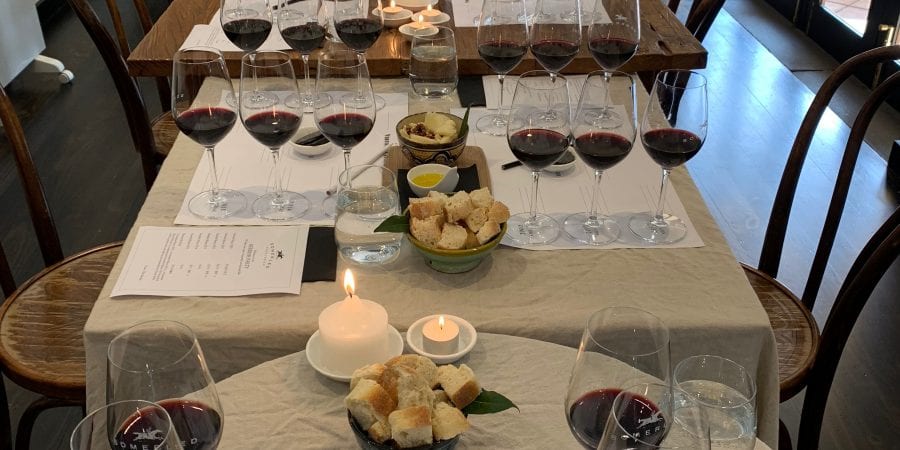A little word from me, Lucy, while Maree, the real blog talent, is out of town!
What ho! Where do we start?
Whisperings on this very blog of a rich, dark and complex Cabernet finally entering the Somerled stable are about to manifest!
Rob is preparing this wine, which has been lovingly tended to over the past couple of years, for bottling next week.
Labels have been printed, and we are busy working on a launch.
This is a wine that we will not let slip under your radar, do not fear: we will be letting you know the minute it ceremoniously enters our Cellar Bar!
And what else is new? In the old days, we used to make so little of our stunning Sparkling Shiraz that there would be breaks of up to a year between vintages.
Now we have realised that this tests the emotions of our clients more than is kind, and have closed the gap on production accordingly.
We sold out of our 2014 Sparkling Shiraz a month ago and will have its shiny, elegant replacement – the 2016 vintage – available in September.
It’s just being shaken down now – see last week’s post for a reminder of all things uber-technical when it comes to our bubbles.
Old Wines!
So this is how old things can get in the Somerled stable:
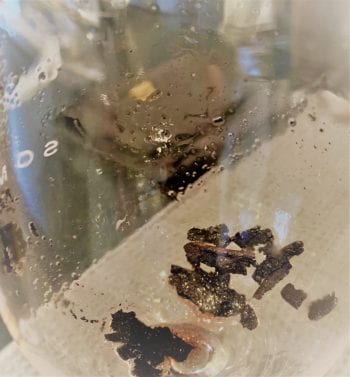
This is a sight Rob loves, believe it or not.
If you’re going to have crud at the bottom of the glass, then fingers crossed it’s solid like this, so it’s easy to decant out, leaving the rest of the wine clear as a bell. It’s mainly tartrate and pigment.
This was found at the bottom of the Somerled 2010 Shiraz that we carefully decanted for our Museum Shiraz tasting last Sunday.
Sometimes it’s a bit finer, and a bit more of a delicate operation to separate from the wine when decanting.
As we’ve mentioned on this blog before, it’s a great idea to stand old wines up overnight before pouring, so that any sediment can fall to the base of the bottle.
Here’s Rob then carefully pouring the old wines at a right angle over a candle, the light allowing him to see when the fine sediment starts to move towards the neck of the bottle – a sign that he can stop pouring.
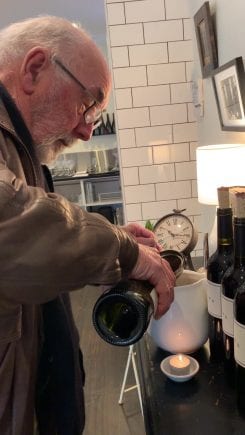
SO:
If you’ve been carefully pouring, and have made sure the wine has been standing up a good long while before pouring, then you only waste an inch or so.
And if you’re like Rob, you immediately take a moment to lean on the bar and drink that cruddy inch yourself. Winemakers are rustic like that.
More on Old Wines!
So what did we find when we ran everyone through our Shirazes dating back to 2002 last Sunday?
We’ve said it before and we’ll say it again: if you have any Somerled ’01 or ’02 in your cellar, drink it now! Rob implores you!
How about a nice dinner of lamb cutlets on a Wednesday night, no more than two of you, and a beautiful old bottle of red made by Rob? It really is the time to make this happen.
At this tasting, we went straight from the 2002 to the 2010.
The 2010 was rich, dark, complex and getting those glorious bottle-age aromas that Rob really loves.
The 2002 was spectacular but why, Rob asks, would you want to keep it any longer?
It’s still kept its ruby tints which is incredible for an 18 year old wine, and we can’t ask much more of it. It’s an elegant wine, beautifully aged, beautifully complex, and has no more improving to do – but could easily deteriorate if left much longer.
Speaking of Old Wines
Look at this incredible old Rutherglen Muscat that Rob found in his cellar!
Okay so this is a style of wine that can stand a bit of ageing.
It’s probably been there for 40 years, by accident, after having been in barrel for about 20, and is still stunning.
He opened it for mum and me this very week.
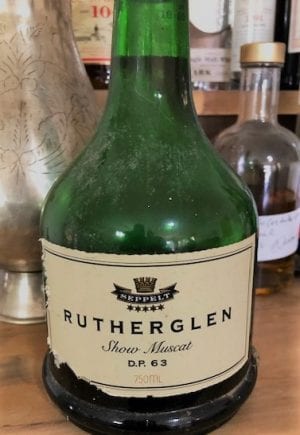
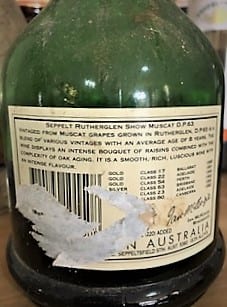
What treasures are you all drinking? Let us know in the comments or on Facebook so Rob can see! He loves it.
Our Friends with Greek Wine
We don’t put a pause on our beautiful Museum Shiraz tastings for much – but this is an exception!
This Sunday we’re hosting a sold out session on Greek wines.
We’ve befriended an incredibly passionate Greek sommelier, Clare Aslanidis, and have had the most wonderful time tasting with her.
Though it’s sold out, we will be offering a mixed pack for you next week, which we’ll choose this weekend.
In it will be indigenous Greek varieties that we’ve never heard of before, with subtle characters we can’t remember experiencing before.
When Clare speaks of Greek wine, she talks of saltbush, savoury elements that ensure that you know that the wine you’re drinking is from Greece. We were gripped on her every word.
They’re fascinating, very well made and unique in style.
We’ll be comparing them with these four well-known beauties which you may recognise:
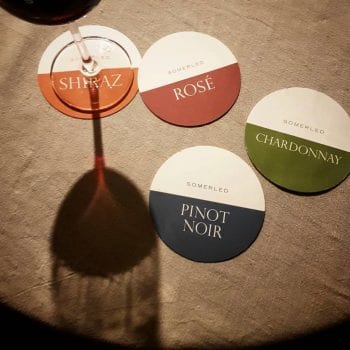
Can’t wait to offer you a selection of hellenic mysteries next week.
As always, tell us your thoughts, feelings, fears, highs and lows in our Comments section below!
We love hearing from you …. cheerio for now, Luce.
